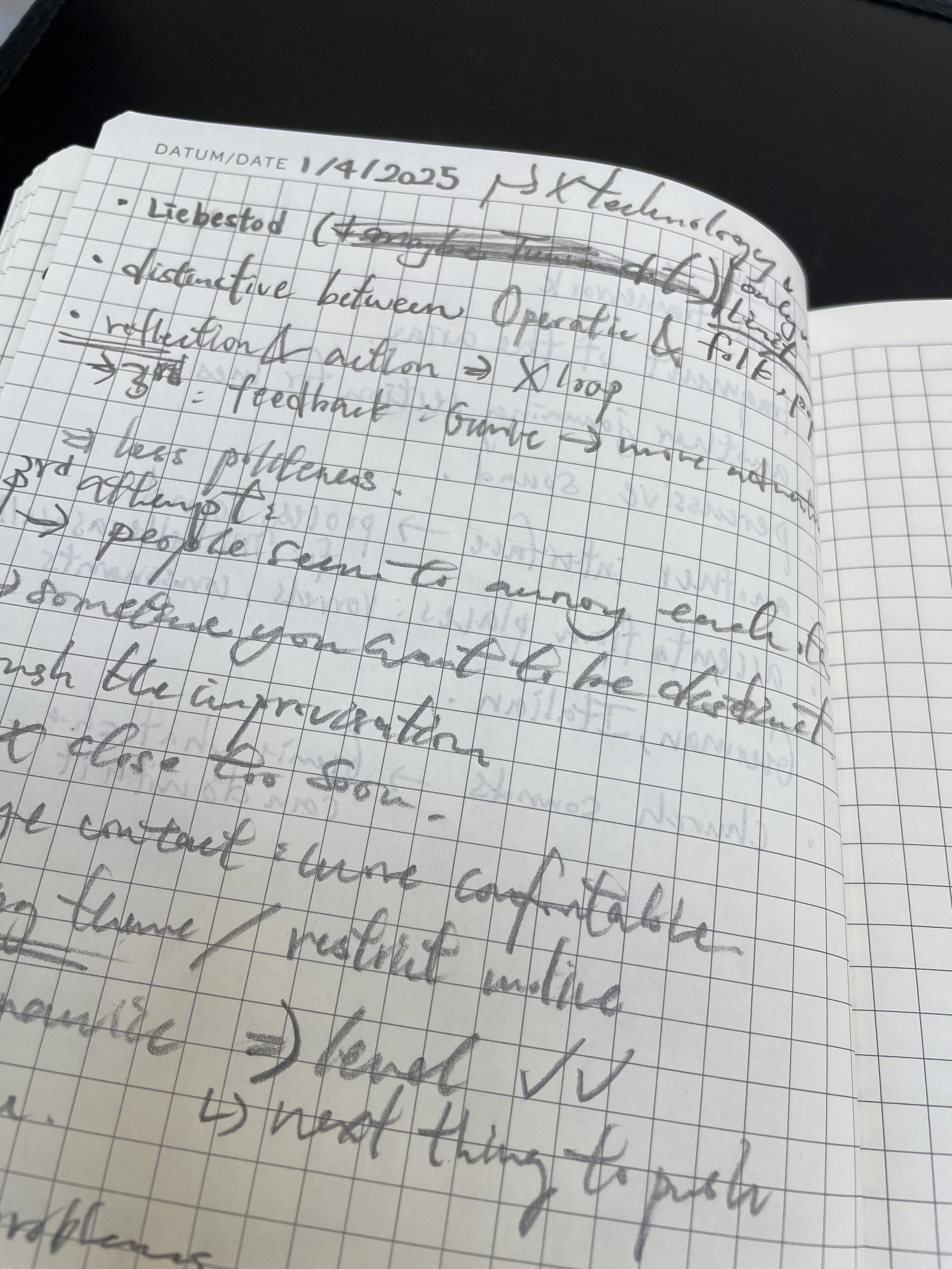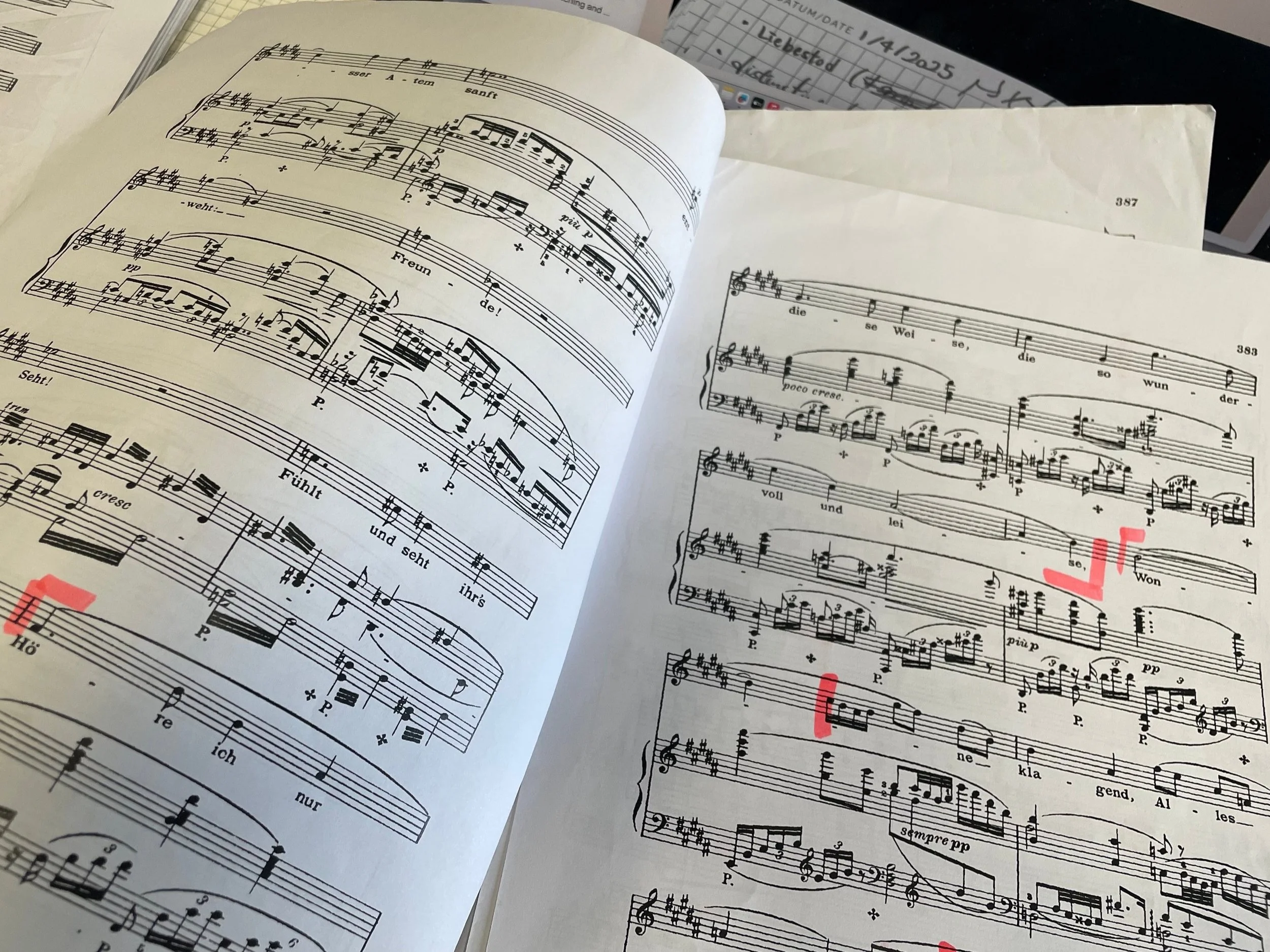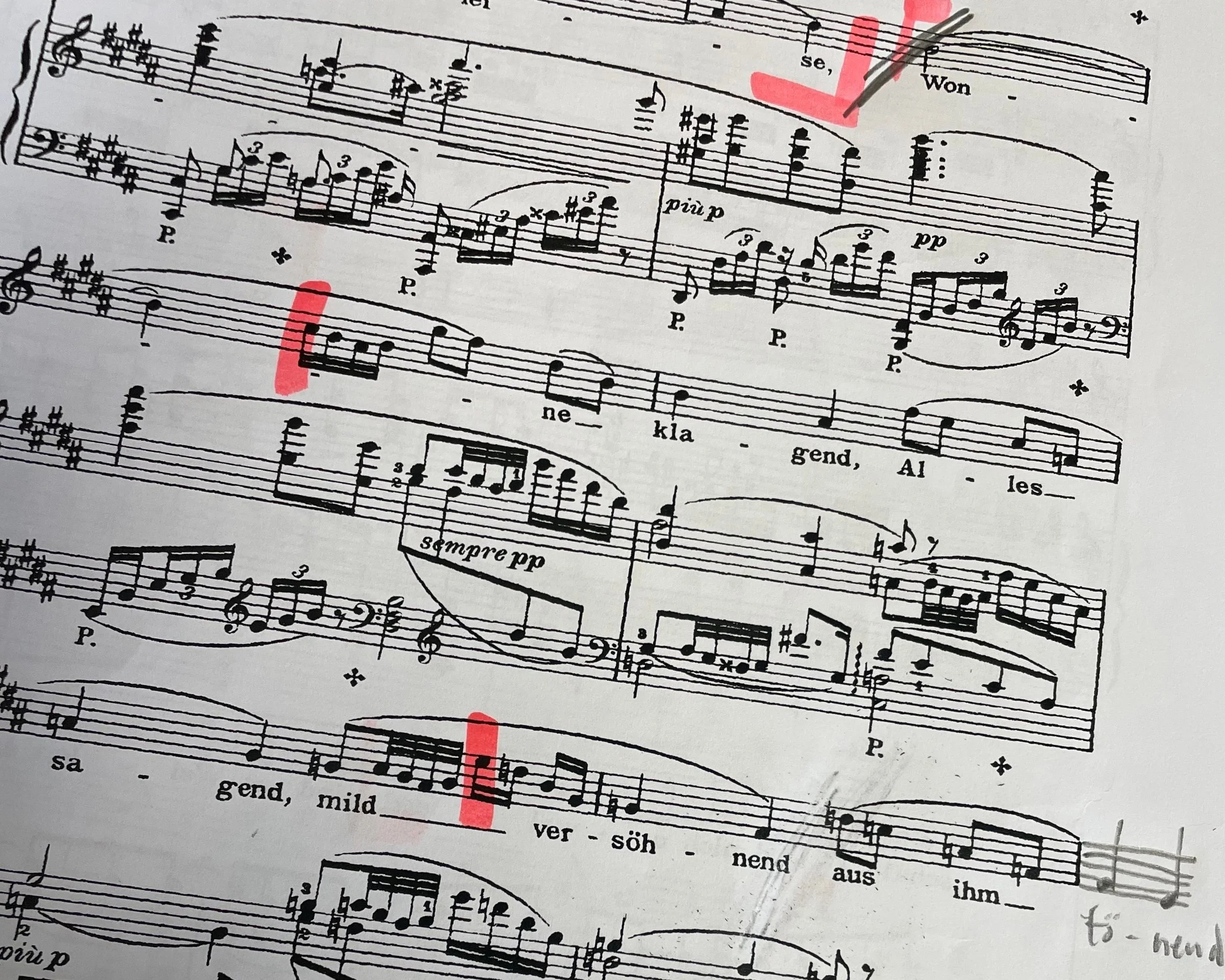Week 3: The Wagnerian Exploration
Date: 1st April, 2025
Time: 4:00-5:30pm
Venue: Pats Pa11
This week is a continution from last week’s jamming section but we have shifted our focused today on Wagner’s Liebestod from Tristan Und Isolde. This week we limited ourselves on not using technological modification and also intended to accent the distinctive between my Operatic Singing and Genie’s Folk and Pop Singing. As we did last week, we did three improvisation section based on different fragments in the piece.
Jamming Section
As usual, the technical set-up have taken a way quite a lot of time for the meeting. Therefore, Genie and I hit the ground running this time around, as we hope to fight for more time on our improvisationary section.
Audio link for desktop users: https://drive.google.com/drive/folders/1ET3UAcpU7mYl5WVu8dEdBYN2x1eVv5jE?usp=drive_link
Theme 1 (Höre ich nur diese Weise, die so wunder vollund leise)
Our first improvisation on liebestod is based on the line, Höre ich nur diese Weise, die so wunder vollund leise in the middle of the aria. In order to maintain the operatic qualities, I restricted myself to only singing in this idioms. In our first attempt on improvising the theme, broken down the theme into piece stop and restart in between, changing the tempo, registers of theme and added embellishment to the melody. As I am only allowed to sing in an operatic idiom. Therefore, I feel like Genie are performing at the same time but from different universe. After the section, Genie confessed that she basically have forgot the theme once she have started the section, hence we work on the same theme again, after a note-bashing revision of the theme.
Rather than only sticking to the operatic singing idiom, I think I am more adventurous in exploring different timbres in our second attempt and it is obvious than Genie is more interactive compared to the first attempts. I also had a go with playing with the vibratos at the top long notes. But sometimes that I should be doing is that I might have too much fun in creating weird timbre, therefore there were times that I giggled during section.
Theme 2
The second theme that we did improvisation on is the last three notes of Liebestod. After I doing this section I remember that I have very strong feeling that I think this section didn’t go as well as what I wanted. From all these throat clearing sound that I produce, we can really tell that I am not really singing comfortably. Opera is different from other form of singing, pianissimo doesn’t really mean very soft, all these marking are in comparison with other the passages from the opera. Therefore, these third notes there has a certain intensity to it, that are good enough to blow of the mics, especially it is in a upper register. Therefore, in order to fit in this three notes withour overblasting, I have to restrict my voice quite a lot to produce that soft tone, hence making my experience of this section not very enjoyable. However, through reviewing the recording of the piece, hearing the clashed at 0:57 and 3:07, you really can’t disagree that the section has it beauty within it.
Theme 3
We ended our meeting this with a section that comparatively more technological with the use of the loop in section. The use of loop somehow make life the section least tiring. As the theme is always there in the loop, we basically don’t have to be concern that we have varied the theme too much that the listener wouldn’t be able to tell that is the theme. Due to the omnipresent of the theme, I think both Genie’s and my approach in the section has changed in different ways. First, the improvisation is like a 3-people gig. Therefore, more communication between Genie, the loop and myself is required, however as both Genie and I knows what is coming in the both. It is also very easier for us to synchronise to some extent. To some extent, I think our approach in this section is quite aggressive because it is as if Genie and I are aiming to attack the loop that can’t be change. Our improvisation with loop is quite chaotic but very powerful when compare the other sections. The crunch on the dissonance is spectacular and Genie and I connects better with the assistant of the loop.



